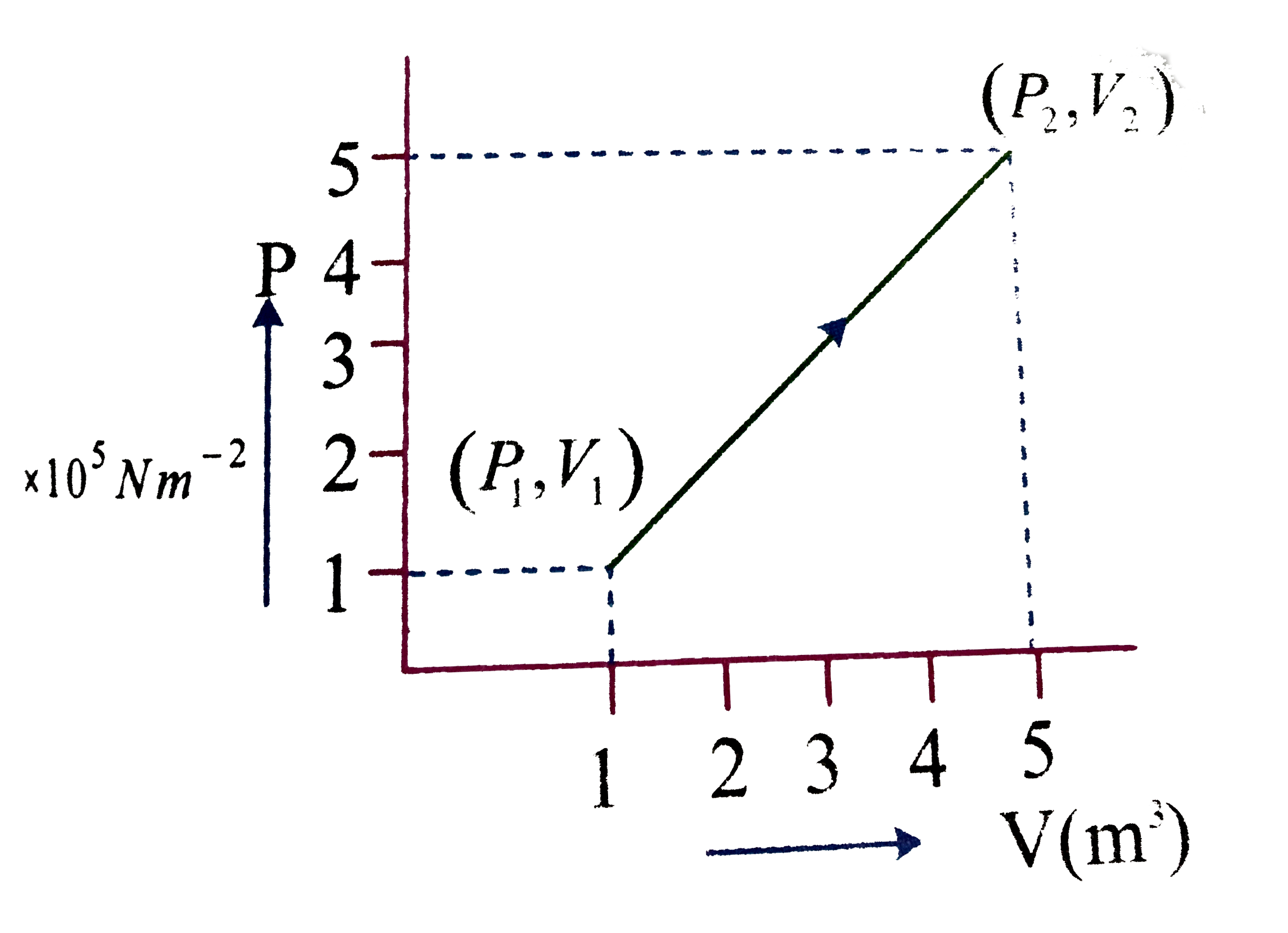A system can be taken from the initial state to the final state by two different methods, let represent the heat given to the system and the work done by the system. Which of the following must be the same in both the method?Solution in Tamil
a)
b)
c)
d) .
The correct Answer is:D
.
Topper's Solved these Questions
- BOOK - HC VERMACHAPTER - LAWS OF THERMODYNAMICSEXERCISE - Exercises22videos
LAWS OF THERMODYNAMICS
- BOOK - HC VERMACHAPTER - LAWS OF THERMODYNAMICSEXERCISE - Short Answer14videos
LAWS OF THERMODYNAMICS
- BOOK - HC VERMACHAPTER - LAWS OF THERMODYNAMICSEXERCISE - Objective I9videos
LAWS OF THERMODYNAMICS
- BOOK - HC VERMACHAPTER - KINETIC THEORY OF GASESEXERCISE - All Questions120videos
KINETIC THEORY OF GASES
- BOOK - HC VERMACHAPTER - NEWTON'S LAWS OF MOTIONEXERCISE - Exercises42videos
NEWTON'S LAWS OF MOTION
Similar Questions
A thermally insulated, closed copper vessel contains water at 150C. When the vessel is shaken vigorously for 15 minutes, the temprature rises to 170C. The mass of the vessel is 100 g and that of the water is 200 g. the specific heat capacities of copper and water are 420Jkg−1K−1 and 4200Jkg−1K−1 respectively. negalect any thermal expansion.
(a) how much heat is transferred to the liquid-vessel system ?
(b)how much work has been done on this system?
(c ) how much is the increase in internal energy if the system ?03:50View SolutionShould the internal energy of a system necessarily increase if heat is added to it?
01:54View SolutionThe first law of theromodynamics is a statement of
02:19View SolutionCalculate the rms speed of nitrogen at STP (pressure =1 atm and temperature =00C. The density of nitrgoen in these conditions is 1.25kgm−3
02:28View SolutionA block of mass 2 kg placed on a long frictionless horizontal table is pulled horizontally by a constant foerce F. It is found to move 10 m in the first two seconds. Find the magnitude of F.
02:16View SolutionIf n moles of an ideal gas are expanded is isothermally and reversibly from an initial state in which it has pressure p1 and volume V1 to the final state of volume V2 and pressure P2, then
01:28View SolutionA system changes from the state (P1,V1) to (P2V2) as shwon in the diagram. The workdone by the system is
 01:20View Solution
01:20View SolutionAn ideal gas can be taken form initial state 1 to final state 2 by two different process. Let ΔQ and W represent the heat given and work done by the system. Then which quantities is/are same in both process (where ΔU= internal energy of gas)
01:17View SolutionA thermo-dynamical system is changed from state ) ,(P1,V1) to (P2,V2) by two different process. The quantity which will remain same will be
07:34View SolutionA system is taken from state A to state B along two different paths 1 and 2 . The heat absorbed and work done by the system along these two paths are Q_(1) and W_(1) and W_(2) respectively.
03:46View SolutionA gaseous system changes from state A(P_(1), V_(1), T_(1)) to B(P_(2), V_(2) , T_(2)) , B to C (P_(3), V_(3) T_(3)) and finally from C to A. The whole process may be called
View SolutionA gaseous system changes from state A(P_(1),V_(1),T_(1)) to B(P_(2),V_(2),T_(2)) , B to C(P_(3),V_(3),T_(3)) and finally from C to A . The whole process may be called
06:09View SolutionA gaseous system changes from state A (P_(1), V_(1),T_(1)) to B (P_(2), V_(2),T_(2)) to C(P_(3), V_(3),T_(3)) and finally from C to A . The whole process may be called :
01:15View Solutionएक आदर्श गैस आयतन V1 से V2 तक समतापीय विधि से प्रसारित होती, तथा फिर रुद्धोष्म विधि से प्रारम्भिक आयतन V1 तक संपीडित की जाती है। प्रारम्भिक दाब P1 है तथा अन्तिम दाब P3 है। कुल कृत कार्य W है। तब :
02:03View SolutionA system changes from the state (P_(1), V_(1)) to (P_(2) , V_(2)) as shown in the figure below. What is the work done by the system –
03:29View SolutionAn ideal gas expands from state (P_(1), V_(1)) to state (P_(2), V_(2)) , where P_(2) = 2P_(1) and V_(2) = 2V_(1) . The path of the gas is expressed by the following relation, P = P_(1) [1 + ((V - V_(1))/(V_(1)))^(2)]
02:02View Solution

